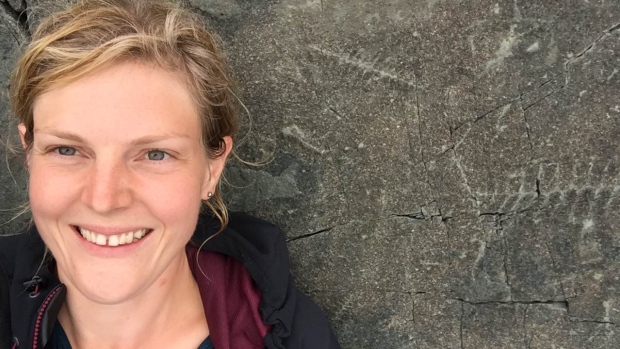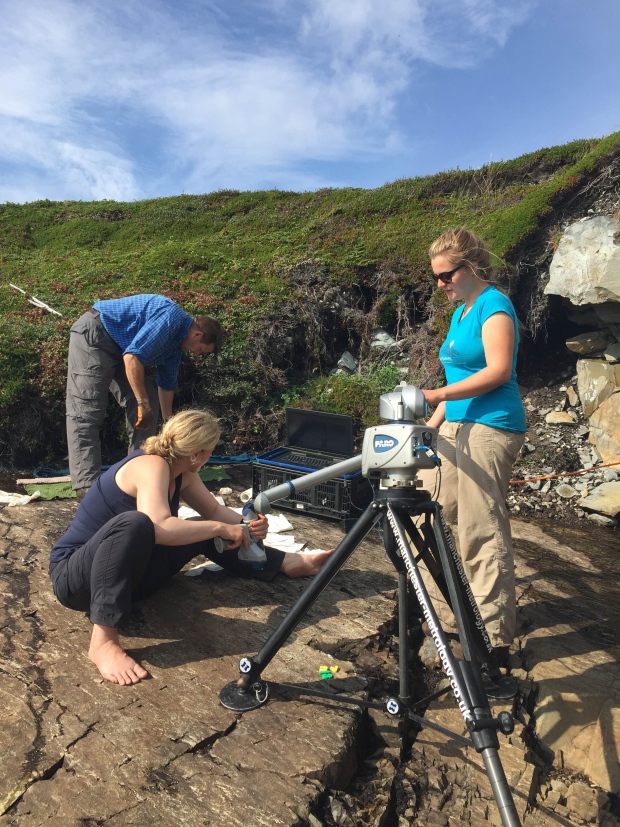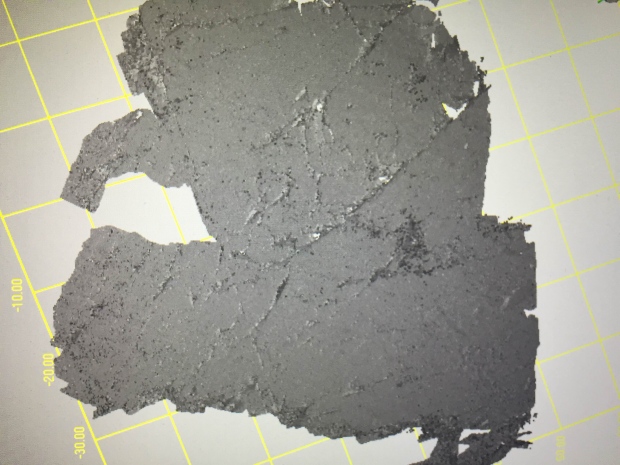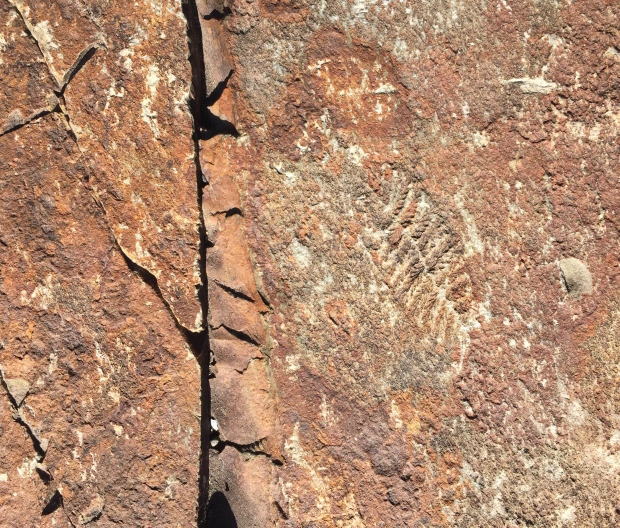@ WFS,World Fossil Society,Riffin T Sajeev,Russel T sajeev
A researcher from the University of Cambridge is on the Bonavista Peninsula to get a better understanding of what’s left some of the oldest organisms in the history of life on earth.Paleontologist Emily Mitchell is using a hand-held laser to map thousands of large, complex fossils — dating from about 560 million years ago — along the coastline in Little Catalina.

Paleontologist Emily Mitchell from the University of Cambridge next to a fractofusus fossil at Watern Cove, Mistaken Point. (Submitted by Emily Mitchell)
- Newfoundland fossils may show earliest reproduction in complex organism
- N.L. fossil shows earliest evidence ever of animals with muscles
“They’re very complicated and they’re very large, they can be up to a metre long and they’re really, really weird-looking,” Mitchell told CBC Radio’s Central Morning Show.
“They don’t look like animals, and they don’t look like plants, and they don’t look like fungi or mushrooms and as a result it’s very hard to work out what they actually were.”
Mitchell said the fossils are “incredibly important.”

Emily Mitchell, as well as other researchers, are mapping fossils along the coastline in Little Catalina. (Submitted by Emily Mitchell)
“This is the first time that we see large things that probably are the precursors to animals actually appearing.”
Mitchell shipped 150 kilograms of equipment from the U.K. in order to record the fossil surface, including a generator and the laser scanner which is mounted on a tripod with a mechanical arm.
“It records the fossil surface to very, very small detail, we can get .05 of a millimetre so that’s very, very small.”
That detail is important because the fossils are incredibly difficult to photograph.
“They’re not very deep into rock so photographs have to wait for the exact perfect light to capture them so it’s quite difficult and that perfect light can only last for half an hour an hour on some surfaces,” said Mitchell.
The equipment records the fossils, which are not allowed to be moved, exactly where they are on the rockface.
The laser can also capture the entire surface of the rock, and pick up details researchers wouldn’t necessarily be able to see at the site.
Months of work ahead
Mitchell’s specialty involves looking at the spatial positions of fossils.
- Rooms to host bonanza fossil find from Port Union
- Trilobite fossil gifted back to Manuels River, decades after its discovery
“These creatures didn’t move around, so the place where they are on the rockface encapsulates their entire life history, so how they reproduced, how they interacted with neighbours and local environment,” she said.
By combining the scans and statistical analysis, researchers can compare the spatial positions of the fossils on the rock-face to modern organisms to work out biological facts, such as how they reproduced.Mitchell has a lot of work to do once she gets back to the lab.

This fossil scan from Little Catalina contains some Ivesheadiomorphs, fronds and holdfast discs. (Submitted by Emily Mitchell)
“There’ll probably be a couple months of putting all the scans together and marking out all the fossils and then a couple more months at least before we start getting an idea of what the spatial patterns are and what they’re saying to us.”
During the three weeks spent in Newfoundland, Mitchell and her colleagues from Memorial University and the British Geological Survey will have mapped about 4000 fossils.
Mitchell said the combination of very large surfaces, unique species, and the oldest complex organisms in the fossil record make the area a “brilliant” place to do research.
This field season the team is working around Little Catalina and Mistaken Point.Mitchell said she plans to return next year to continue her research in Port Union, where a rare fossil discovery, coined Haootia quadriformis, was made in 2009
Source: Article by Maggie Gillis, CBC News
@ WFS,World Fossil Society,Riffin T Sajeev,Russel T sajeev



 September 19th, 2016
September 19th, 2016  Riffin
Riffin 
 Posted in
Posted in  Tags:
Tags: 